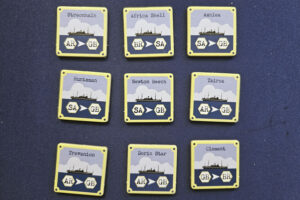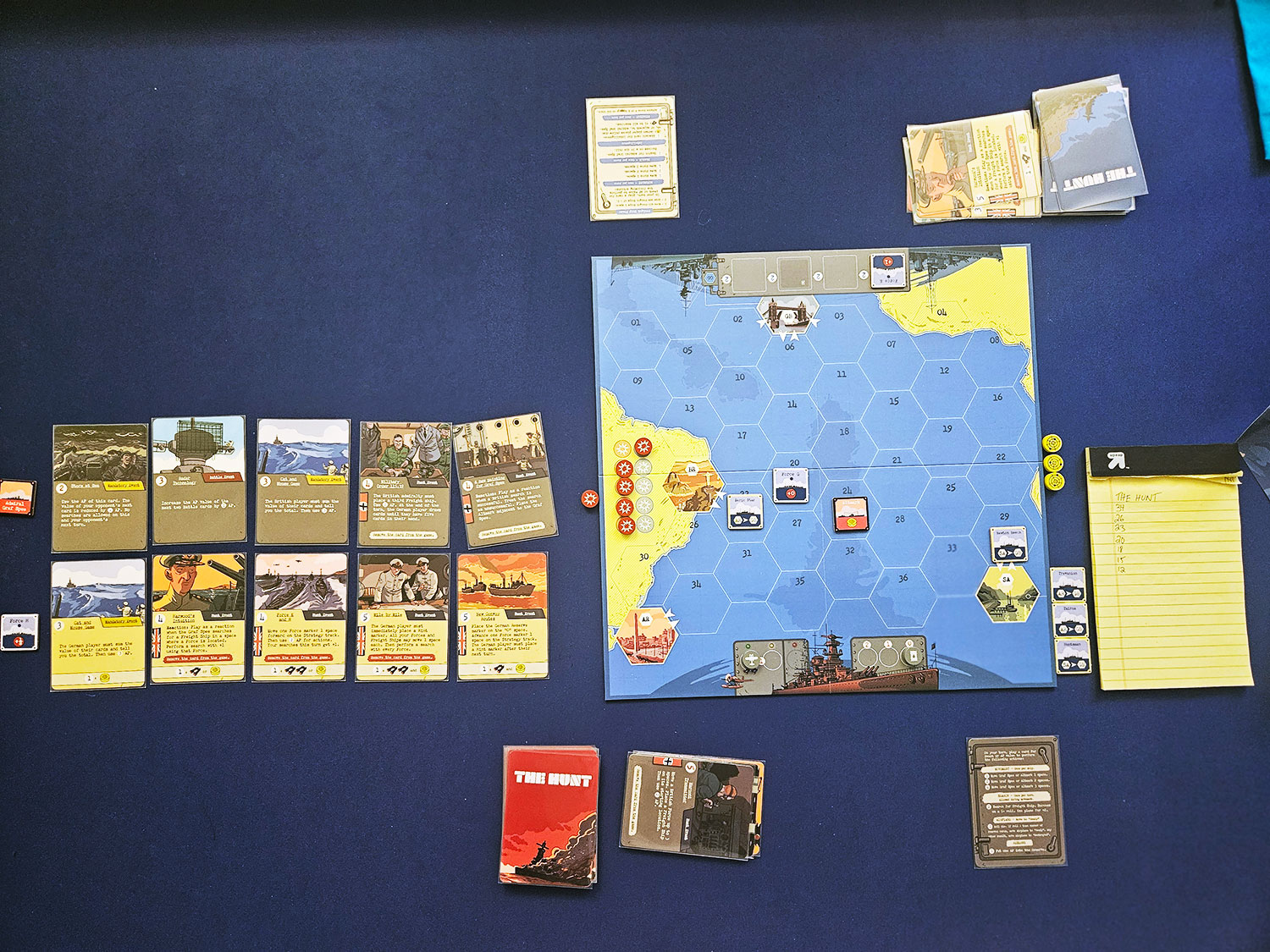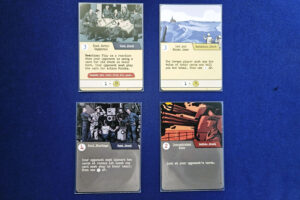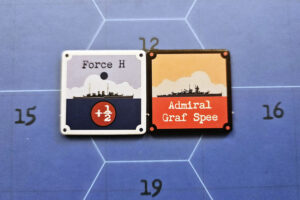 Entry-level, two-player wargames have recently flooded the market with punchy, meaty titles. From Watergate to the Undaunted series, this once-niche space is turning into a hobby all of its own. With the volume of titles increasing, newer titles are having a tougher time standing out from the crowd.
Entry-level, two-player wargames have recently flooded the market with punchy, meaty titles. From Watergate to the Undaunted series, this once-niche space is turning into a hobby all of its own. With the volume of titles increasing, newer titles are having a tougher time standing out from the crowd.
Can The Hunt do so, or will it sink to the depths of history, forever to be forgotten?
Gameplay Overview:
In The Hunt by Matthias Cramer, designer of the aforementioned Watergate, two players will be competing against one another in a tense game of cat-and-mouse. One player plays the British Royal Navy, protecting freight ships as they head towards their destination. The other player plays the German Kriegsmarine whose main purpose is to attack and defeat those freight ships before they can make it to safety.

However, there’s one small wrinkle in this equation: The one German submarine that is used for attacks is not represented on the board; rather, the German player tracks its movements with pencil and paper, making its presence to the British player never fully known.
As the game progresses, players will use the cards in their hand either to activate events or to take more traditional actions base on the card’s point value. The British player’s modus operandi is to find the German submarine by any means necessary. The game ends when the British player discovers the German sub, and the climactic battle takes place. The winner of this battle wins the game.
But in an extra juicy wrinkle, the game can end without a battle ever taking place. If the British player is cunning enough to scare away the German sub for long enough for the freight ships to successfully dock, then the British player wins. However, if the German player is a ruthless huntress and can sink the freight ships before they can dock, then they win.
Use your wits, keep a low profile, and stockpile power for an explosive final battle to win The Hunt.

Game Experience:
The Hunt is very much a piece with designer Matthias Cramer’s Watergate: a tense, two-player, card-driven, entry-level wargame. Both fill the player with equal parts excitement and dread as each action is pondered over and acted upon. No action in these games feels meaningless, and every decision point matters. What makes this tension so palpable is that this high-wire act can be sustained for the games’ entire play time, a feat only possible because of both games’ short playing times.

The big selling point of The Hunt over Watergate, besides the theme change, is the hidden movement mechanic. Personally, I am not a fan of hidden-movement games, and The Hunt didn’t do anything special to convince me otherwise. The tension inherent in one of the two players thinking they’re in fierce competition with the other is rapidly undercut when the “seeking” player finds out they’ve been barking up the wrong tree the entire game. In my experience, the “hiding” player is seldom caught off guard by the logic of the “seeking” player, and usually in those instances it feels like luck over skill. Having hidden movement in a game where every decision matters really makes the game feel lopsided.
But let’s put that aside and assume you love hidden movement games. Does this game hold up in other ways? Well, not quite.
This game’s climactic battle is both the high and low point of this game. If the British player manages to locate and engage the German submarine, then the sole battle of the game takes place. Make no mistake: this is an end-game trigger, and the battle can happen at any time. It is theoretically possible for the battle to happen in the first turn. Regardless of the outcome of the battle, when this battle is triggered early on, the game is over before it really starts.

Another frustrating layer to this single-battle system is how the existence of the battle itself underplays the hidden movement portion of the game. There is no real reward for the British player finding the German sub (other than the participation trophy of getting to fight for victory). The only upside to spotting the sub is controlling the timing of the battle itself. The cards used for actions throughout the game are also how the battle is fought: the higher the action value on the card, the better the card will fare in battle. So yes, being able to “find” the sub at the exact moment when your cards are right can feel fantastic, but there are also cases where the British player knows exactly where the sub is and will refuse to engage in the battle because their cards aren’t great, again underplaying the emotional heights of a hidden-movement game.
Outside of the hidden-movement flaws, the game just feels a bit clunky. The number of cards the German player gets to draw is a complicated wrinkle; British die rolls can be mitigated by sending out a plane, which feels shoe-horned in to fill the game with more actions; and the actions that the British player uses to locate the German sub feels awkward and overly convoluted. Overall, for a game that can be taught in 5 to 10 minutes, the rules explanation is still filled with several utterances of “…except!”.
Final Thoughts:
The Hunt maintains the tight card-driven gameplay of Cramer’s Watergate while adding hidden movement. This additional wrinkle of hidden movement feels unwelcome in such a tight, competitive atmosphere. Between uneven playtimes, weird gameplay systems in a small game, and uninspired event cards, The Hunt is not a game I can recommend in this crowded market, especially if you are not a fan of hidden movement.
Final Score: 2.5 Stars – The Hunt continues elsewhere.
 Hits:
Hits:
• Unique hidden movement mechanics
• Beautiful artwork
• Quick teach & short playtime
Misses:
• Unique hidden movement mechanics
• Clunky, odd game systems
• Boring event cards






















It’s not actually a submarine it’s the pocket battleship Admiral Graf Spee. My wife and I really liked this one , the accuracy in the history of the battle and the art work is absolutely beautiful, like something out of Tin Tin.
Would give a 7.5 .
Graf Spee was not a uboat but a pocket battleship